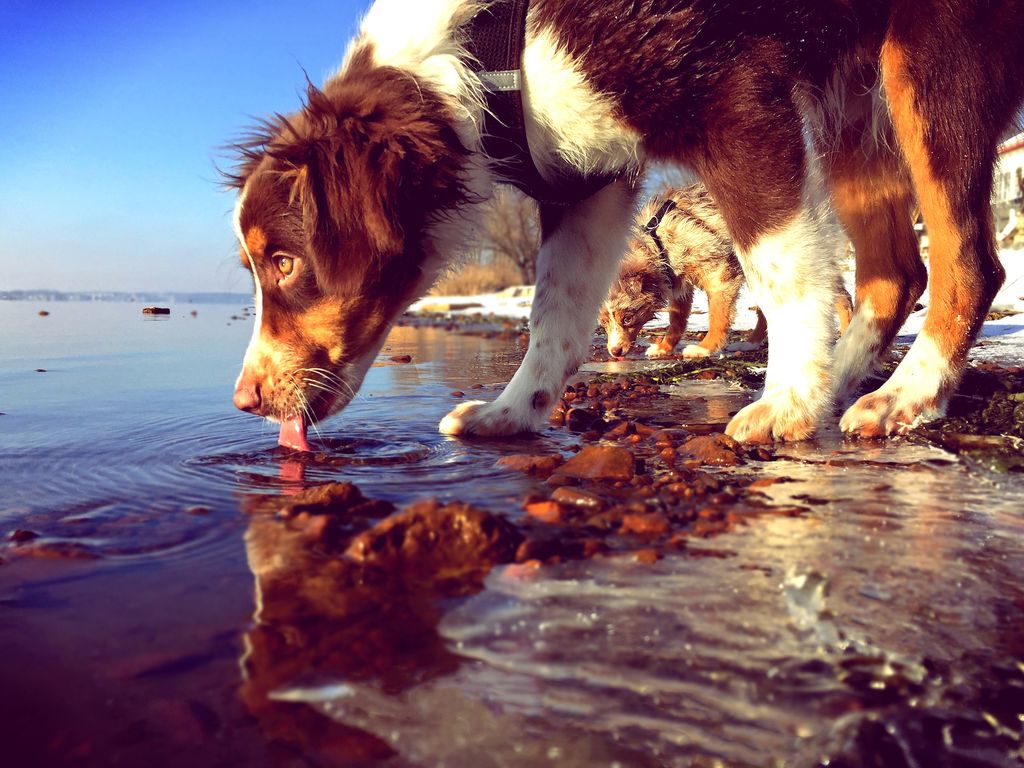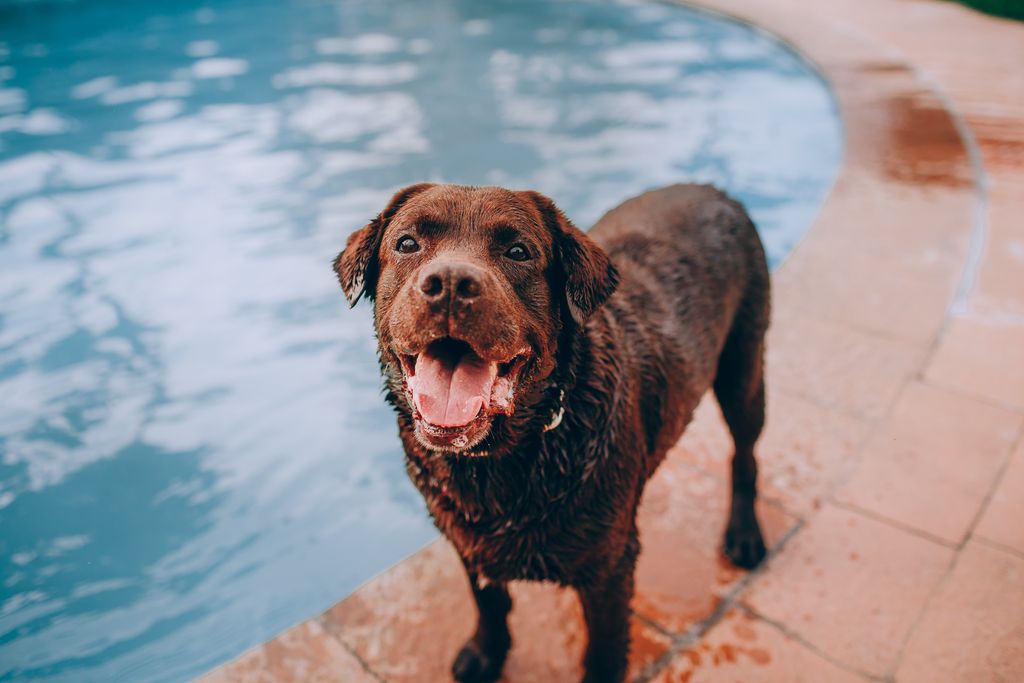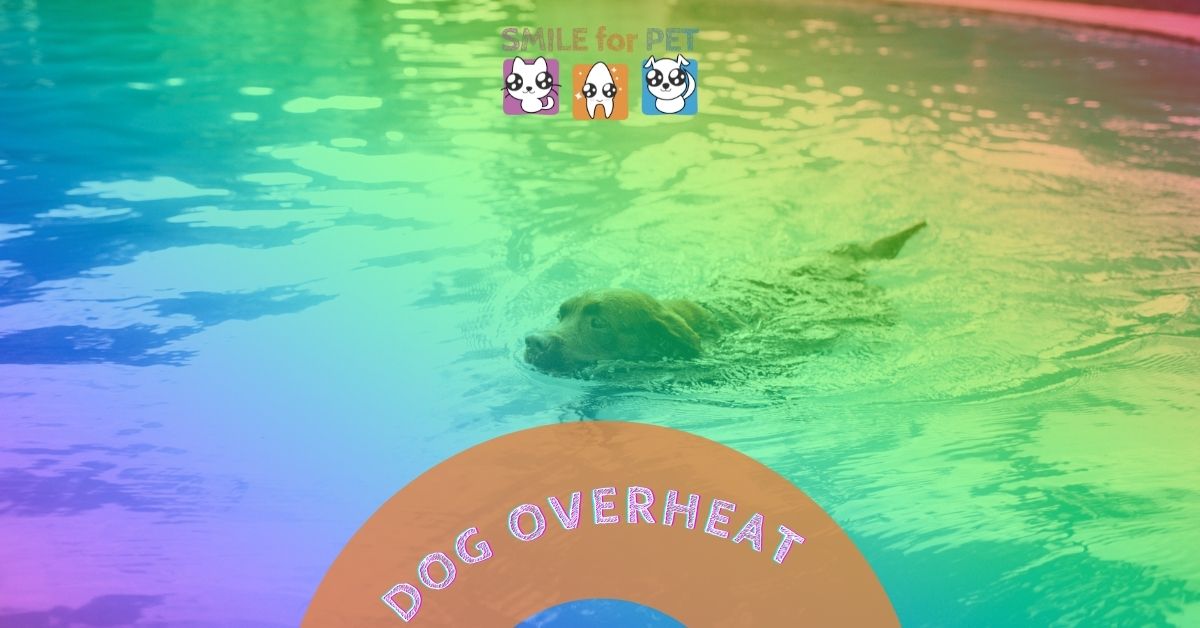Dogs Overheat. Misconceptions. Dog Heat Stroke Protection
There are many misconceptions about how dogs tolerate heat and how they can be helped during dog overheating. So, let’s break it down.
What kind of dog can get heatstroke? Unfortunately, any of them.
Some speeches are more exposed to heatstroke than others:
☑️ puppies under 5 months old; Pups still imperfect heat exchange
☑️ young dogs under the age of 2 years old who have experience only with one summer
☑️ Shortened-muzzles dogs (brachycephalic)
☑️ animals with cardiovascular and respiratory diseases (collapsed trachea, heart failure, etc.)
☑️ overweight pups; even a little extra weight is a risk to get overheated because the heart has to work harder to cool down an extra fat instead of the muscles.
☑️ shaggy dogs; if there’s too much undercoat or the undercoat is matter, it doesn’t act as an airbag and becomes a coat
☑️ smooth-haired dark dogs because they have too little hair to provide an air cushion between the hot air and the body; dark hair gets hot quickly in the sun
☑️ any dark-colored ones, because they get very hot in the sun
☑️ older dogs because of impaired heat exchange, weak heart, reduced coat quality
☑️ dogs who have lived part of their lives in cold climates areas and moved to the south – their bodies are used to fighting the cold, not the heat
Alarms or stages of heat stroke:
Dog overheat stage 1
Not always happens.
Sights:
- The dog is slightly lethargic
- Show a lack of interest
- Eats less than usual
- Reacts less actively to any treats
- Trying to be in shade all the time
- On a walk begins to lag behind
- Moves more slowly than usual
- May sometimes stumble
- May lie in the shade and refuse to go further
- Lying down in ditches and refusing to go further
- Looks tired without serious exertion
Dog overheat stage 2
The dog begins to poke his tongue out hard, pulling the corners of his mouth back.
The tongue is dark or very bright in color. If your dog’s tongue and mouth are dark, you can gently pull back the dog’s lower eyelid and look at the color of the mucous membranes. If they are very red and not typical for your dog, your dog is starting to overheat.
Mucous membranes are the tissues that line body cavities such as the mouth. The appearance of the mucous membranes can tell you a lot about blood circulation, oxygenation, hydration, and other aspects of your pet’s health. In a healthy pet, the mucous membranes are pink and moist.
What are mucous membranes in dogs?

Dog overheat stage 3
The tongue and mucous membranes darken, and the dog begins to breathe rapidly. Usually accompanied by dry mucous membranes. The dog usually lies on its side and refuses to go anywhere, does not eat, but eagerly drinks. Breathlessness does not go away despite measures taken to cool the dog. When the temperature is measured, it is slightly high than usual, but not by much.
This is already a dangerous condition that requires urgent action (read below).
Dog overheat Stage 4
The dog is not feeling well.
He/She is hardly moving, breathing very often, shallowly, so that his whole body shakes. The mucous membranes may be very dark or very pale. There is increased salivation, and saliva can literally pour from the mouth. This means that the dog has started to vomit. Because of this, the pet refuses to drink water (a dangerous sign).
When you tried to pour water into the dog’s mouth pet swallows it hard, may cough, and even choke on water. If the dog is lifted on his feet, there is a slight lack of coordination and severe weakness.
It’s a severe condition, but you can still manage to deal with the dog’s overheating by yourself.
Overheat Stage 5
The dog begins to have cramps.
The stages of cramping might be different: from slight twitching of the limbs or head to severe muscle spasms. The dog is very frightened or semi-conscious. Get your dog to a vet right away, the pet needs professional help!

What should you do if you think your dog has a heat stroke or overheat?
IMPORTANT: Signs of heat stroke may not appear immediately, but accrue in 2-3 hours after overheating itself!
How you can help in mild dog overheating cases:
a. Put the dog in the shade, find a cool place
b. Water the dog with cool (not ice cold!) water
c. Put something cold: bottles of cold but not ice-cold water. Also, it might be a washcloth soaked in cold water. Put something cold on his armpits, abdomen, and groin
d. You can immerse the dog up to the middle of the body in cool but not icy water (bathtub, ditch, pond)
e. Place the dog on a cooling mat, wear a blanket soaked in cold water and place a cool object/cloth on the occipital tubercle (on the back of the dog’s head)
f. Watch for breathing and color of mucous membranes (mouth). If the dog is fidgety – check for warm spots near the belly or under the dog’s fur
g. The dog might get cold, that’s ok – let the pet “step aside” to balance body temperature. The temperature drop may have been too rapid and the dog is just getting cold
h. Keep watching the dog for at least several hours. Keep him out of the sun, stay in a conditioned space. Don’t let your pet stay in the heat for long periods without cooling
i. Try to keep your dog from overheating for the next 2-3 weeks. Unfortunately, the dog is more susceptible to high temperatures after overheating

